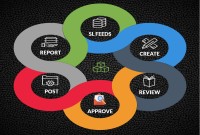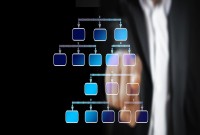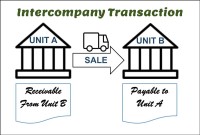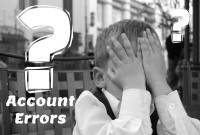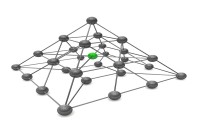- Home
- Business Processes
- Industry Knowledge
- Aerospace Industry
- Automotive Industry
- Banking Domain
- BFSI Industry
- Consumer/ FMCG Industry
- Chemicals Industry
- Engineering & Construction
- Energy Industry
- Education Domain
- Finance Domain
- Hospitality Domain
- Healthcare Industry
- Insurance Domain
- Retail Industry
- Travel and Tourism Domain
- Telecom Industry
- Leadership Skills
- eLearning
- Home
- Business Processes
- General Ledger (Record to Report)
- Complexities in GL System
Complexities in GL System
Although technically a general ledger appears to be fairly simple compared to other processes, in large organizations, the general ledger has to provide many functionalities and it becomes considerably large and complex. Modern business organizations are complex, run multiple products and service lines, leveraging a large number of registered legal entities, and have varied reporting needs.
These complexities create a need for advanced general ledger systems providing new functionalities. Let us understand some drivers for this complexity.
1. Specialized Software
For large organizations, the general ledger is hosted on a computerized system, integrated with multiple sub-ledgers and the legacy general ledgers. For the most part the journal entry is automated and fed into the general ledger through a complex import process. GL is the backbone of any enterprise resource planning (ERP) software and the general ledger stores the transactions into a database that is shared with other processes being managed through the ERP. In such cases a GL provides the following information:
- General ledger chart of accounts
- Administration of general ledger database reporting/consolidation structure
- Preparation and recording of journal entries
- Monitoring of the close process at unit and company levels
- Review and analysis of account and unit-level trial balances
- Preparation of consolidated company trial balance
- Generation and distribution of monthly system financial reports
- Reconciliation of balance sheet accounts and related bank statements
- Preparation of eliminating entries
- Finalization of monthly consolidated statements
- Calculation and consolidation of expense type (selling, general and administrative/cost of sales) information
- Maintenance of corporate/group overhead allocation pools and related rates
- Manual record retention/archiving and audit support specific to general accounting.
2. Multitude of Subsidiary Ledgers
For any company that has a large number of transactions, putting all the details in the general ledger is not feasible. Hence it needs to be supported by one or more subsidiary ledgers that provide details for accounts in the general ledger. Consider any one account in a general ledger, such as Accounts Payable. Perhaps you want to know how much money you currently owe to each of your suppliers and this information is very critical for you to manage your relationship with that supplier and to ensure that you are paying only for what you purchased and received. If you only have one or two suppliers, it is easily possible to compile this information directly in the general ledger by opening two natural accounts in the name of the suppliers. But what if you have hundreds or even thousands of suppliers? In that case, you may want to create subsidiary ledgers for accounts payable that will capture the complete master and transactional level details for each of your suppliers. This way, you can record the details of transactions involving each supplier in the relevant subsidiary ledger and then subsequently transfer the totals into a control account in the general ledger.
3. Complex Organizational Structure
Modern business organizations run multiple products and service lines, operate globally, leverage a large number of registered legal entities, and operate through complex matrix relationships. To stay competitive in the current global business environment, they must often develop highly diverse and complex organizational structures that cross international borders. These complexities create a need for advanced operational and supporting business processes to drive organization-wide effectiveness, efficiency, and achieve business objectives. This forces companies to create a diverse array of subsidiaries, legal entities, organizations, and accounting processes to ensure a smooth and profitable business flow. Tax considerations also impact how businesses construct these complex legal structures. General Ledger has to be structured in a fashion that it can cater to the reporting needs of every unit, department, and regulatory bodies in this complex structure.
It needs to collect and process data from these multiple units and provide a consolidated view of the enterprise for shareholders and management.
4. Legacy Systems
Mergers & Acquisitions (M&A) is the new normal for large companies, driving innovation and growth. The capability to successfully integrate or divest businesses is a major source of competitive advantage. There is a lack of flexibility to integrate mergers and acquisitions. All these corporate actions bring added complexity from a general ledger standpoint. Legacy data need to be transferred to the organizational chart of accounts system and accounting policies. Systems need to be established to collect and transform such data on an ongoing basis until the migration to the enterprise general ledger is done.
5. Multiple Charts of Accounts
In these large corporations, different business units within the company have different COAs and different reporting priorities and the standard reports don’t produce the information the organization needs to properly run the business or meet tax and/or regulatory needs. Complexity arises also because of accounts that are not used consistently across the organization, reducing the effectiveness of reporting and consolidation.
6. FX and Complex Currency Requirements
For international businesses with significant volumes of cross-border transactions, the management of currency risk is an essential task for the treasury department. There are businesses with varied and very complex FX management needs, either because they have higher transaction volumes or because they work with a larger number of currencies. In these cases, their General Ledger becomes very complex as it needs to manage various processes like multi-currency recording, translation, conversion, and revaluation. Some businesses also do FX leveling and sweep to manage the hedging risks.
7. Changing Regulatory Landscape
The global regulatory landscape is undergoing a fundamental change. In the years since the 2007/08 financial crisis, regulators across the globe have focused on a program of more robust supervision of financial services firms. The increasing weight of new regulatory legislation from regulators, coupled with the increasingly diverse risks to which firms are exposed, means that firms need to ensure that their general ledgers are updated and flexible enough to provide the data needed for these changing participants are required to adapt and evolve to address the regulatory and technological changes.
Related Links
You May Also Like
-
In this article, we will explain the general Ledger journal processing flow from entering journals to running the final financial reports. Understand the generic general ledger process flow as it happens in automated ERP systems. The accounting cycle explains the flow of converting raw accounting data to financial information whereas general ledger process flow explains how journals flow in the system.
-
Matrix Organizational Structures
In recent times the two types of organization structures which have evolved are the matrix organization and the network organization. Rigid departmentalization is being complemented by the use of teams that cross over traditional departmental lines.
-
Legal Structures in Businesses
Businesses not only vary in size and industry but also in their ownership. Most businesses evolve from being owned by just one person to a small group of people and eventually being managed by a large numbers of shareholders. Different ownership structures overlap with different legal forms that a business can take. A business’s legal and ownership structure determines many of its legal responsibilities.
-
Legal Structures for Multinational Companies
A multinational company generally has offices and/or factories in different countries and a centralized head office where they coordinate global management. A multinational company (MNC)is a corporate organization that owns or controls the production of goods or services in at least one country other than its home country.
-
In most of the automated financial systems, you can define more than 12 accounting periods in a financial year. This article will explain the concept of the adjustment period and the benefits of having adjustment periods. Adjustment periods have their inherent challenges for the users of financial statements and there is a workaround for those who don’t want to use adjustment periods.
-
Trial Balance in General Ledger
One of the greatest benefits of using a double-entry accounting system is the capability to generate a trial balance. What do we mean by trial balance? As the name suggests a trial balance is a report that must have its debits equals to credits. Understand the importance of trial balance and why it is balanced. Learn how it is prepared and in which format.
-
Horizontal or Flat Organizational Structures
Flat organizational structure is an organizational model with relatively few or no levels of middle management between the executives and the frontline employees. Its goal is to have as little hierarchy as possible between management and staff level employees. In a flat organizational structure, employees have increased involvement in the decision-making process.
-
After reading this article the learner should be able to understand the meaning of intercompany and different types of intercompany transactions that can occur. Understand why intercompany transactions are addressed when preparing consolidated financial statements, differentiate between upstream and downstream intercompany transactions, and understand the concept of intercompany reconciliations.
-
Explore the concept of journal reversals and understand the business scenarios in which users may need to reverse the accounting entries that have been already entered into the system. Understand the common sources of errors resulting in the reversal of entries and learn how to correct them. Discuss the reversal of adjustment entries and the reversal functionalities in ERPs.
-
Network Organizational Structures
The newest, and most divergent, team structure is commonly known as a Network Structure (also called "lean" structure) has central, core functions that operate the strategic business. It outsources or subcontracts non-core functions. When an organization needs to control other organizations or agencies whose participation is essential to the success, a network structure is organized.
Explore Our Free Training Articles or
Sign Up to Start With Our eLearning Courses

About Us
Learning
© 2023 TechnoFunc, All Rights Reserved

